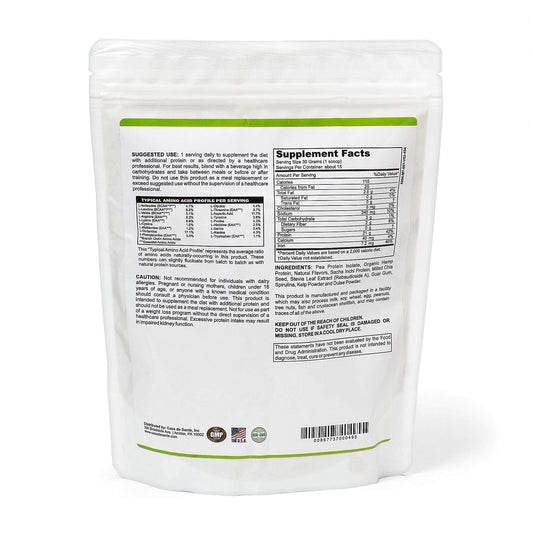Dysphagia
Dysphagia
Dysphagia, commonly known as difficulty in swallowing, is a medical condition that affects millions of individuals around the world. It can occur at any age and is caused by a variety of factors. Understanding dysphagia is crucial for early detection, management, and improved quality of life for those affected.
Understanding Dysphagia
Dysphagia is a complex condition that involves problems with the swallowing process. It can occur in the mouth, throat, or esophagus, making it challenging for individuals to consume food and liquids safely and efficiently. Understanding the definition, symptoms, and potential causes of dysphagia can aid in timely diagnosis and appropriate treatment.
Definition and Overview
Dysphagia is a term derived from Greek, where "dys" means difficulty, and "phagia" refers to eating or swallowing. It encompasses all difficulties related to the swallowing process. Dysphagia can range from mild discomfort to severe impairment, affecting an individual's ability to maintain adequate nutrition and hydration.
When it comes to understanding dysphagia, it is important to consider the complexity of the swallowing process. The process involves a series of coordinated movements that allow food and liquids to pass from the mouth to the stomach. It begins with the voluntary act of chewing, followed by the involuntary act of swallowing. During swallowing, the muscles in the mouth, throat, and esophagus work together to propel the food or liquid towards the stomach.
However, in individuals with dysphagia, this process is disrupted. The muscles may not function properly, or there may be structural abnormalities that obstruct the passage of food and liquids. As a result, individuals with dysphagia may experience difficulties in initiating swallowing, moving food or liquids through the throat, or preventing them from entering the airway.
Common Symptoms
The symptoms of dysphagia may vary depending on the underlying cause and the location of the swallowing difficulty. Some common symptoms include:
- Feeling of food getting stuck in the throat or chest
- Persistent coughing or choking during or after eating
- Pain or discomfort while swallowing
- Weight loss or malnutrition
- Recurrent chest infections
These symptoms should not be ignored, as they may signify an underlying condition that requires medical attention.
It is important to note that dysphagia can have significant consequences on an individual's overall health and well-being. Difficulties in swallowing can lead to inadequate nutrition and hydration, which can result in weight loss, malnutrition, and dehydration. Furthermore, the risk of aspiration pneumonia, a serious condition where food or liquids enter the airway and cause infection, is increased in individuals with dysphagia.
Potential Causes
Dysphagia can arise from various conditions and factors, including:
- Neurological disorders, such as stroke or Parkinson's disease
- Muscular disorders, like muscular dystrophy or myasthenia gravis
- Structural abnormalities, such as tumors or strictures
- Gastroesophageal reflux disease (GERD) or esophagitis
- Psychological factors, including anxiety or depression
Identifying the underlying cause of dysphagia is essential for optimal management and treatment outcomes. A thorough evaluation, including medical history, physical examination, and diagnostic tests, may be necessary to determine the specific cause of dysphagia in each individual case.
Treatment options for dysphagia vary depending on the underlying cause and severity of the condition. In some cases, swallowing exercises and modifications to diet and eating habits may be sufficient to improve swallowing function. In more severe cases, medical interventions such as medications, surgery, or the use of feeding tubes may be necessary to ensure adequate nutrition and hydration.
Overall, understanding dysphagia involves recognizing the complexity of the swallowing process, being aware of the common symptoms, and identifying the potential causes. By doing so, healthcare professionals can provide appropriate interventions and support to individuals with dysphagia, ultimately improving their quality of life and overall well-being.
Types of Dysphagia
Dysphagia, a condition characterized by difficulty in swallowing, can be categorized into two main types: oropharyngeal dysphagia and esophageal dysphagia. Each type presents its own unique challenges and underlying causes.
Oropharyngeal Dysphagia
Oropharyngeal dysphagia is a swallowing disorder that originates in the mouth or throat. It is often caused by neurological or muscular impairments that affect the coordination and strength of the swallowing muscles. This type of dysphagia can be a result of various conditions, including stroke, Parkinson's disease, multiple sclerosis, or head and neck cancer.
Individuals with oropharyngeal dysphagia may experience difficulty initiating a swallow or have trouble moving food or liquids from the mouth to the throat. They may also have problems with chewing or controlling the food bolus, leading to a higher risk of aspiration, where food or liquid enters the airway instead of the esophagus.
Treatment for oropharyngeal dysphagia often involves a multidisciplinary approach, including speech therapy, dietary modifications, and sometimes the use of assistive devices or techniques to improve swallowing function. In severe cases, a feeding tube may be necessary to ensure adequate nutrition and hydration.
Esophageal Dysphagia
Esophageal dysphagia is a condition where the swallowing difficulty is located in the esophagus, the muscular tube connecting the throat to the stomach. Unlike oropharyngeal dysphagia, which primarily involves problems with the oral and pharyngeal stages of swallowing, esophageal dysphagia is related to abnormalities in the esophagus itself.
Structural abnormalities, such as strictures (narrowing) or tumors, can impede the passage of food and liquids through the esophagus, causing difficulty and discomfort. These abnormalities can be congenital or acquired, with causes ranging from gastroesophageal reflux disease (GERD) and esophagitis to esophageal cancer or the presence of foreign bodies.
Individuals with esophageal dysphagia may experience sensations of food getting stuck or a feeling of pressure or pain in the chest while swallowing. They may also have symptoms of acid reflux, such as heartburn or regurgitation.
Treatment for esophageal dysphagia depends on the underlying cause. In some cases, medication or lifestyle modifications can help manage symptoms. However, more severe cases may require surgical intervention to remove obstructions or repair structural abnormalities.
Understanding the different types of dysphagia is crucial for accurate diagnosis and appropriate management. By identifying the specific type and underlying cause, healthcare professionals can develop tailored treatment plans to improve swallowing function and enhance the quality of life for individuals with dysphagia.
Diagnosing Dysphagia
Diagnosing dysphagia involves a comprehensive evaluation of medical history, physical examinations, and diagnostic tests. The process is crucial in identifying the underlying cause of dysphagia and determining the most effective treatment plan.
Medical History Evaluation
A detailed medical history allows healthcare professionals to identify potential risk factors that may contribute to dysphagia. Previous medical conditions, surgeries, or medication use can all provide valuable insights into the patient's overall health and potential causes of swallowing difficulties. Understanding the nature and progression of symptoms is also essential in determining the appropriate diagnostic tests and treatment options.
For example, a patient with a history of gastroesophageal reflux disease (GERD) may be more prone to developing dysphagia due to the chronic irritation and inflammation of the esophagus. On the other hand, a patient who recently underwent neck surgery may experience temporary muscle weakness that affects their ability to swallow properly.
Physical Examinations
Physical examinations are an integral part of diagnosing dysphagia. These assessments focus on examining the mouth, throat, and neck for any visible abnormalities or signs of muscle weakness that may impact swallowing. A thorough examination of the oral cavity, tongue, and facial muscles can provide valuable information about the functional aspects of swallowing.
During the physical examination, healthcare professionals may use various techniques to assess the patient's swallowing abilities. For example, they may ask the patient to swallow different textures and consistencies of food or liquid to observe any difficulties or abnormalities. They may also perform a manual examination of the throat to check for any structural abnormalities or signs of inflammation.
Diagnostic Tests
Diagnostic tests play a vital role in confirming the presence of dysphagia, determining its severity, and identifying the underlying cause. These tests provide objective data that help healthcare professionals make an accurate diagnosis and develop an appropriate treatment plan.
Some common diagnostic tests used in the evaluation of dysphagia include:
- Videofluoroscopic swallow study (VFSS or modified barium swallow): This test involves the patient swallowing food or liquid mixed with a special dye while being monitored by X-rays. It allows healthcare professionals to visualize the swallowing process in real-time, identifying any abnormalities or difficulties.
- Esophageal manometry: This test measures the pressure and movement of the esophagus during swallowing. It helps identify any abnormalities in the esophageal muscles or coordination that may contribute to dysphagia.
- Endoscopy: This procedure involves inserting a flexible tube with a camera into the esophagus to visualize its lining and detect any structural abnormalities or signs of inflammation. It provides a detailed view of the esophagus, allowing healthcare professionals to identify potential causes of dysphagia.
These diagnostic tests, along with the information gathered from the medical history evaluation and physical examinations, aid in establishing an accurate diagnosis and guiding appropriate treatment strategies. The results of these tests help healthcare professionals determine the best course of action, whether it be lifestyle modifications, medication, or surgical intervention, to alleviate the symptoms of dysphagia and improve the patient's quality of life.
Treatment Options for Dysphagia
The treatment of dysphagia aims to improve swallowing function, ensure adequate nutrition and hydration, and prevent complications. The approach to treatment depends on the underlying cause and severity of dysphagia.
Dysphagia, or difficulty swallowing, can be a challenging condition to manage. However, with the right treatment options, individuals can regain their ability to eat and drink safely and comfortably. Let's explore some of the therapies, exercises, medications, and surgical interventions that can help improve swallowing function.
Therapies and Exercises
Speech therapists or swallowing specialists play a crucial role in the treatment of dysphagia. They may recommend various exercises and therapies to improve swallowing function. These exercises can target specific muscles involved in swallowing, such as the tongue and the muscles in the throat. By strengthening and coordinating these muscles, individuals can regain control over their swallowing process.
Additionally, therapists may provide dietary modifications to ensure safe and efficient swallowing. They may recommend changes in food texture, such as pureeing or thickening liquids, to make swallowing easier. They may also suggest using adaptive equipment, such as special utensils, to assist with eating and drinking.
Medications
While therapy and exercises can be effective in improving swallowing function, medications may also play a role in managing dysphagia. In some cases, dysphagia may be caused by underlying conditions such as gastroesophageal reflux disease (GERD) or inflammation. Medications can help manage these conditions, reducing symptoms and minimizing the risk of complications in the esophagus or throat.
It is important to note that medications should always be prescribed and monitored by a healthcare professional. They can assess the individual's specific needs and determine the most appropriate medication for their condition.
Surgical Interventions
In severe cases where dysphagia is caused by structural abnormalities or strictures, surgical interventions may be necessary. These procedures aim to restore normal swallowing function by addressing the underlying cause.
One common surgical intervention is balloon dilation. This procedure involves inserting a deflated balloon into the narrowed areas of the esophagus and then inflating it to widen the passage. By doing so, the obstruction is relieved, and swallowing function can be restored.
In some cases, dysphagia may be caused by tumors or growths in the esophagus or throat. In such situations, surgical removal of these abnormal growths may be necessary to alleviate swallowing difficulties.
Overall, dysphagia is a complex condition that requires a multidisciplinary approach for effective management. Early detection and appropriate treatment can significantly enhance the quality of life for individuals living with dysphagia, ensuring they can enjoy meals safely and comfortably.




























